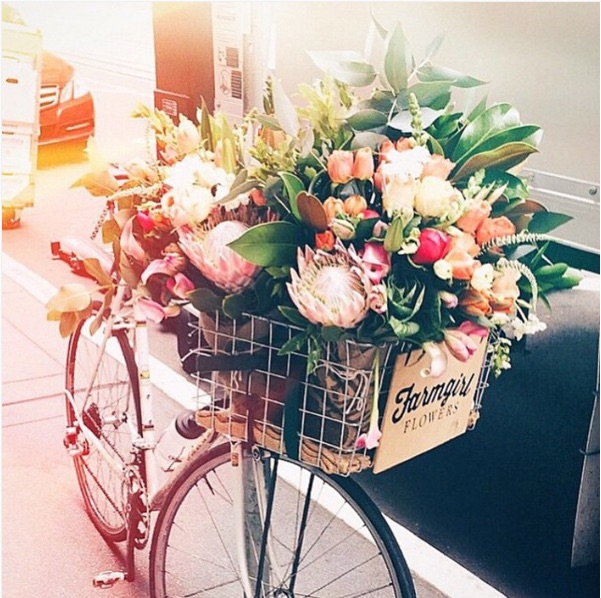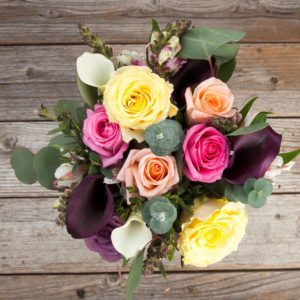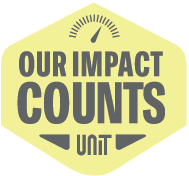How to Find a Bouquet Without a Seedy Backstory
By RoundPeg | February 5, 2019
This post is part of our Conscious Consumerism series to encourage our readers to live – and buy – responsibly. As marketers in the purpose economy, we see it as our job to help people make purchasing decisions that align with their values and contribute to the greater good. Want to learn more about our mission? Download our Manifesto.
My Darling, How can I begin to convey the depth and intensity of my feeling for you? Love is a simple word with only four letters, and its monosyllable is an empty utterance that cannot signify the infinite and intricate fires of passion that blaze between us. Alas, I have no way to make my feelings understood except by offering up this humble bouquet with component parts that were tended by underpaid Colombian women who suffered sexual harassment and repetitive stress injuries…
Wait – what? That last part was a bit jarring, wasn’t it?
Valentine’s Day is drawing near and it’s possible that you’ll purchase flowers. Perhaps you’re buying them as a gift because you want to bring beauty into the life of a loved one. Perhaps you’re buying them because your spouse would get miffed if you didn’t. Unless you’re careful about it, however, you might find yourself buying a bouquet with rather seedy roots.
As Valentine’s Day approaches and you search for the ideal arrangement, consider looking deeper to make sure the story behind the bouquet you give is as beautiful as its blooms.
Did you know that “meaningful” brands have outperformed the stock market by 206%?
Get free access to the latest research & data that prove how Purpose will drive your company’s success:
The Blossoming of the Foreign Flower Industry
A little bit of context will go a long way in helping you find a good bouquet.
Our story begins in 1967 when horticulture student David Cheever wrote a paper identifying the savanna outside Bogotá, Colombia as an ideal place to grow flowers for world markets. He founded a floriculture (flower-growing) operation there in 1970 and other entrepreneurs soon followed suit. In 1971, US growers still produced 1.2 billion blooms of the most popular flowers and imported 100 million blooms. In 1991, the US suspended import duties on Colombian flowers to encourage job growth outside of the coca farming industry.
By 2003, US floriculturists grew only 200 million blooms; the rest were imported. Today, Colombia is the second largest exporter of flowers in the world. It supplies 65% of cut flowers imported into the US.
 The burgeoning Colombian flower industry provided jobs for refugees displaced by guerrilla warfare and others experiencing rural poverty. Still, operations expanded more quickly than regulations and several problems accompanied the progress. A 1981 survey revealed that flower workers were exposed to as many as 127 different chemicals via fungicides and pesticides. In the 1990s, researchers documented child labor, sexual harassment of the primarily female workforce and widespread repetitive stress injuries induced by the word. The reckless drilling of more than 5,000 wells on the savanna caused groundwater levels to plunge, endangering springs, streams and wetlands.
The burgeoning Colombian flower industry provided jobs for refugees displaced by guerrilla warfare and others experiencing rural poverty. Still, operations expanded more quickly than regulations and several problems accompanied the progress. A 1981 survey revealed that flower workers were exposed to as many as 127 different chemicals via fungicides and pesticides. In the 1990s, researchers documented child labor, sexual harassment of the primarily female workforce and widespread repetitive stress injuries induced by the word. The reckless drilling of more than 5,000 wells on the savanna caused groundwater levels to plunge, endangering springs, streams and wetlands.
Concern from customers in the US and other countries led to a series of reforms in the 1990s. Some growers have adopted the reforms, while others have ignored them. If you care about the people behind the process, you have to pay attention. Here are three approaches you can take to avoid supporting questionable floriculture operations (Click to Tweet!).
Approach 1: Go for Certified Foreign Flowers
According to Greta Friedmemann-Sanchez, anthropologist and author of the book Assembling Flowers and Cultivating Homes: Labor and Gender in Colombia, “There are facilities [in Colombia] that have enough washrooms, bathrooms, lockers, cafeterias, a subsidized lunch workers can purchase, recycle all organic material, trying to do biological control of pests and fungus, and follow labor laws. And then there are firms that don’t do any of those things.”
The voluntary Florverde certification requires participating farmers to meet targets in areas including employee welfare, on-the-job health and safety, water use, waste management, energy efficiency, pest management and more. Here’s a list of places where you can buy Florverde certified flowers including convenient retailers like Whole Foods and Costco.
There are several other programs that certify flower farms including
- Fair Trade;
- VeriFlora, which is administered by SCS Global Services (the people behind the FSC Certification); and
- The Rainforest Alliance Certification (find certified retailers in the US here)
Approach 2: Go for Home-Grown Blooms

Farmgirl Flowers has a lively Instagram account. Click this picture to check it out and see exactly what a bicycle courier looks like carrying 10+ bouquets!
Another way to make sure your flower purchases aren’t supporting irresponsible floriculturists is to opt for flowers grown in the US, where it’s less likely for growers to ignore international labor laws.
One floral retailer who uses domestic blooms is Christina Stembel, the founder of Farmgirl Flowers. After taking an interest in the US floral industry in 2009, she wanted to try her hand at a floral business that addressed: (1) The closing of US flower farms; (2) The price differential between imported blooms and domestic ones driven by the wage gap; (3) The variance in chemical regulations domestically versus abroad and (4) The waste generated by the traditional floral supply model.
Farmgirl Flowers uses all US grown flowers and cuts the waste by offering less variety. Stembel conducted independent research and discovered that most people don’t mind limited options – many just want something that looks nice. The company employs workers full-time rather than using contractors and provides health benefits and workers’ compensation. Better yet, if you happen to live in San Francisco, they’ll deliver your bouquet by bike to cut carbon emissions! Many of their bouquets are wrapped in reused burlap bags donated by coffee growers for a pretty, rustic look.
If you just care that the arrangement is beautiful and want to support domestic floriculturists, companies like Farmgirl Flowers are a great go-to.
If you’re a little less flexible, there is an American Grown certification farms can get to indicate that their flowers, foliage and mixed bouquets are 100% US grown and assembled. There’s also a site called Slow Flowers that will help you find floriculturists, retail and studio florists and even wholesalers who work with domestically grown flowers.
Approach 3: Cut the Middleman for Eco-Friendly Handling
Generally, cut flowers go from a grower to a wholesaler to a retailer. Throughout their journey, they depend on refrigerated trucks, airplane transport and storage to prolong their limited shelf life. John Tabis and JP Montufar, co-founders of The Bouqs, give consumers the opportunity to buy arranged flowers directly from growers to cut out the storage facilities and extra runaround.
Since The Bouqs works exclusively with farms certified by Veriflora and The Rainforest Alliance, you can be sure their stems are being grown using environmentally and socially just practices. The farm-direct method also works to cut the waste that occurs in the traditional floral retail model.
Approach 4: Buy BCorp Flowers
Certified BCorp flower options are growing (no pun intended!). If you live in Chicago or Milwaukee in the US, get fresh blooms from Flowers for Dreams, and a portion of your spend benefits a nearby charity.
For those of you in Victoria, Australia, make a meaningful flowers purchase from Miei Fiori. 100% of their net profit goes to The Smith Family charity, dedicated to helping disadvantaged children.
Using any of the approaches described above, you can make this Valentine’s Day one where the bouquets you give are beautiful inside and out. Regardless of whether you’re giving flowers or giving chocolate (or sitting alone watching Netflix until the 15th of February), Happy Valentine’s Day!
This post was originally published on February 24th, 2016 and updated on February 5th, 2019.




